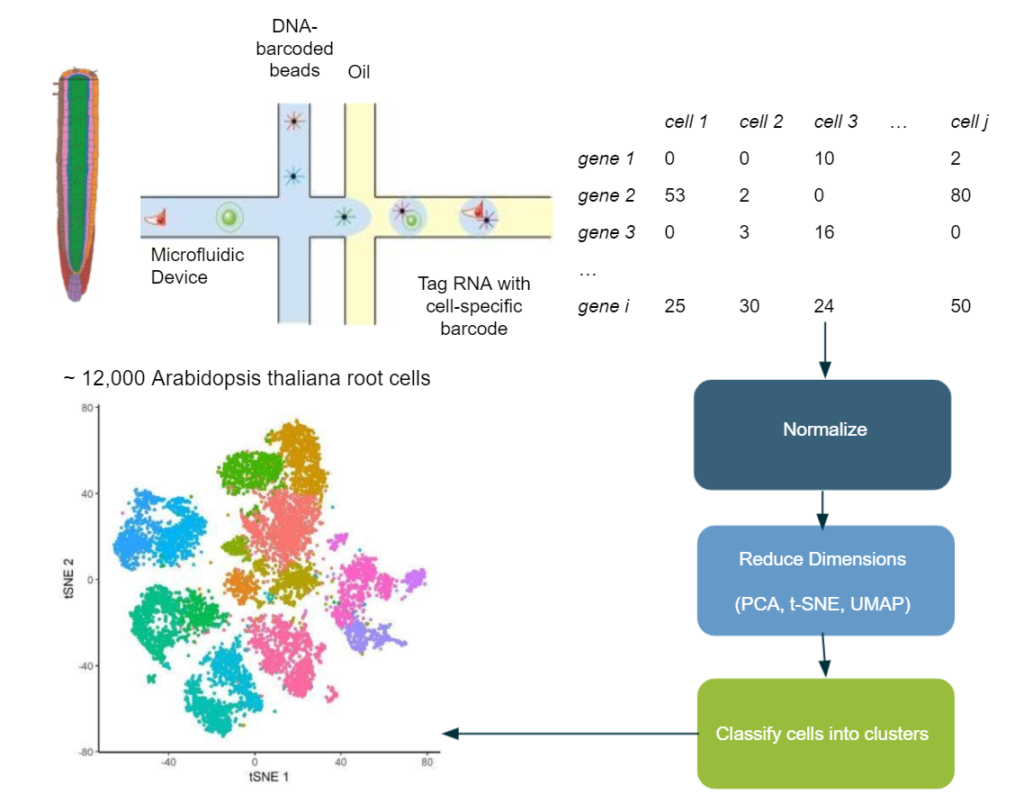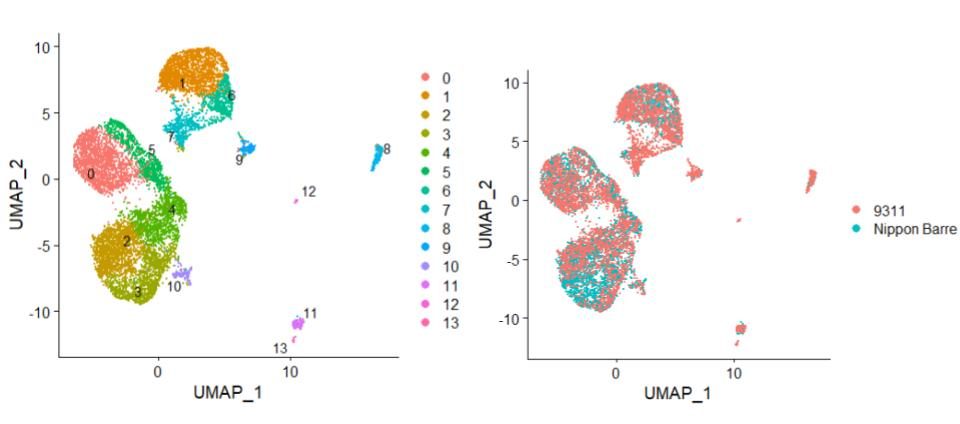The first time I did this internship in the summer of 2020, it was a time where the world literally stopped. A time where so much was going on at the same time and things were extremely unpredictable. However, looking back, the internship gave me an escape and an inspiration to continue and push forward with the blessing of being able to learn while many other internships at the time were cancelled or delayed.
The environment of the lab was extremely welcoming, considering how we interns felt overwhelmed at being a part of such a renowned lab. In 2020, I worked with my mentor Benjamin (Ben) Cole on cross-species analysis of both Arabidopsis thaliana and Brachypodium distachyon, two model plant species. I developed incredible skills such as: being able to iteratively solve problems and focus on solving one problem at a time and communicating what problems I am having with which parts of code. I also learned technical skills like how to analyze a scientific paper and utilize particular skills in the language of R, a software tool.
These experiences during my first internship with JGI sparked my interest in scientific research even more than I had originally anticipated and I decided to apply for a second summer internship with Ben and Margot Bezrutczyk, my mentors. Going into the summer of 2021, as things began to return to normal, I returned with a passion to build on all that I had learned in the previous summer.

Single-cell RNA Sequence Workflow.
This time around there was a twist: I worked with a partner. Maria Mendoza, a determined and detail-oriented graduate student at UC Merced, and I worked to solve a common problem in plant genomics: comparing certain species of plants to one another. In this case, we compared plants that are well known and their genomes annotated, to plants that are less known, with the goal of analyzing and extracting the similarities across species. Specifically, we chose Arabidopsis thaliana as the well annotated plant, and two cultivars of Oryza sativa in which we looked at poorly annotated datasets.

Rice cultivars colored by cell type.
When Maria and I began working together, there was a lot that needed to be done by both of us to get some sort of momentum going. Once we did however, all our endeavors ran smoothly as we were able to work with clustering multiple data sets, checking to see the quality of those clusters, and assessing how well those data sets of species integrate with each other.. All of this can be attributed to the well thought out and organized events set out throughout the process, as well as the clear communication that both Maria and I had from our mentors.
In the end, we learned that all our efforts had led to a variety of different aspects of personal growth between both Maria and me. For Maria, she was able to learn how to code and be able to both test and debug what she wrote, as well as understand how plant genomics worked fundamentally since she had a background with human cells. I on the other hand had a background in coding but was not at all familiar with any of the biology as well as how the packages we used worked so there was a lot of preliminary knowledge and papers that needed to be read and understood back and forth. The final skill that was learned was to be able to criticize and understand papers as well as being able to present with the most minute details optimized. The final outcome of all of these skills had led to the user meeting that both Maria and I presented at, which was an incredible experience that truly resembled the outstanding internship that I had this summer.

BatchBench Workflow
Looking back on all I have been able to learn throughout my undergraduate career, I have been a part of so many great opportunities. I’ve grown both personally and professionally. My time as a JGI intern has been a well-established chapter and to me, is only just the beginning of my journey. It reminds me how important our perspectives of learning are and how we can implement them in our day to day lives as we continue to advance our objectives.
Written by: Lorenzo Scaturchio
Scaturchio is a 4th year Computer Science & Engineering major at the University of California, Merced.
